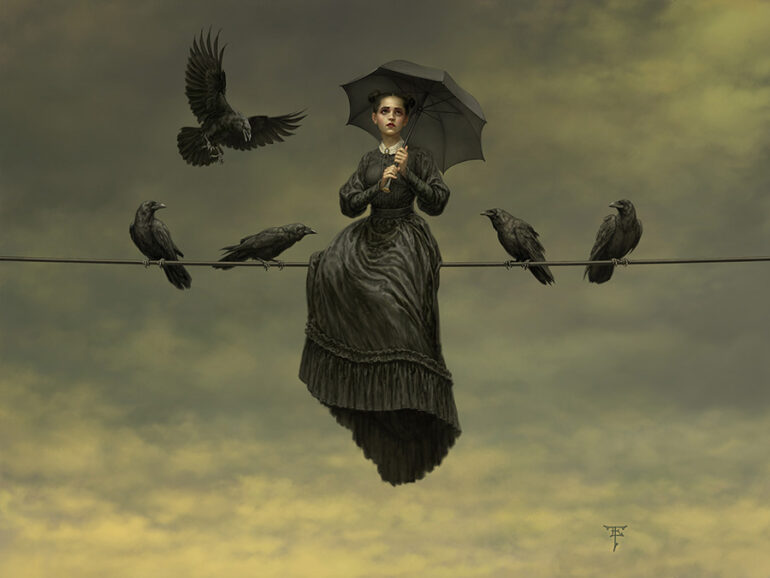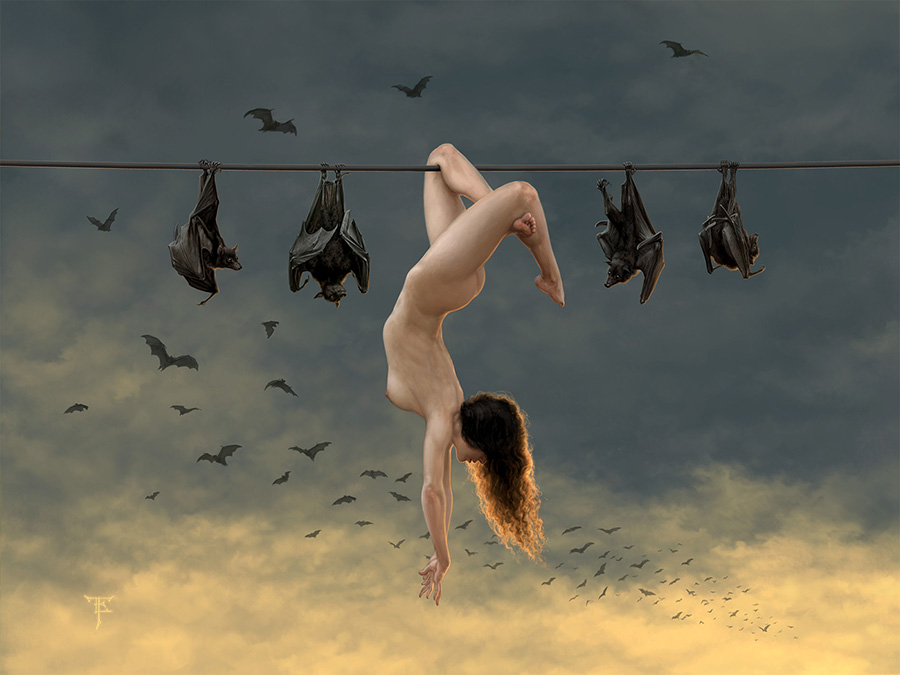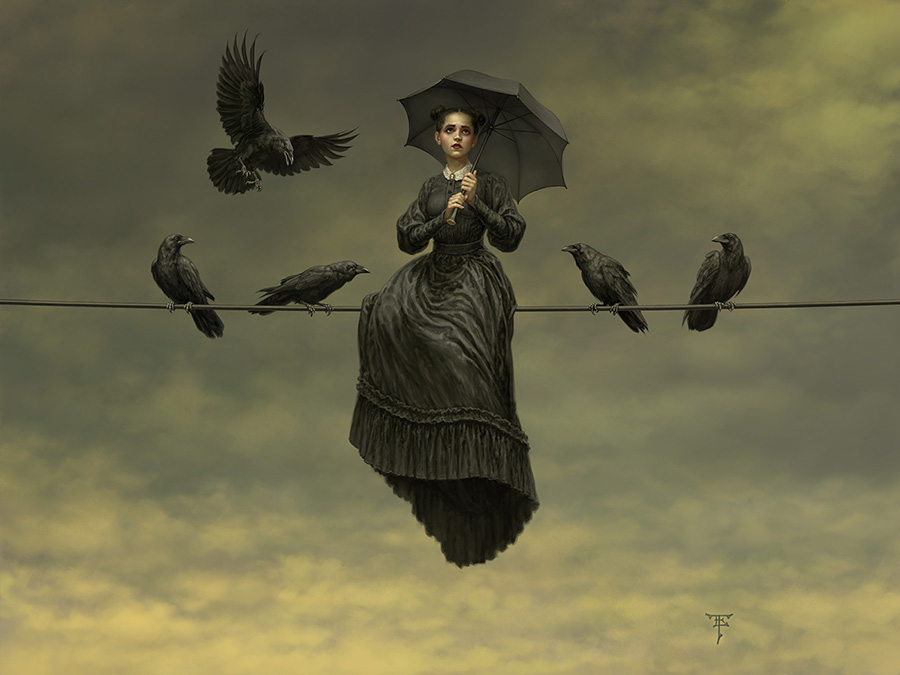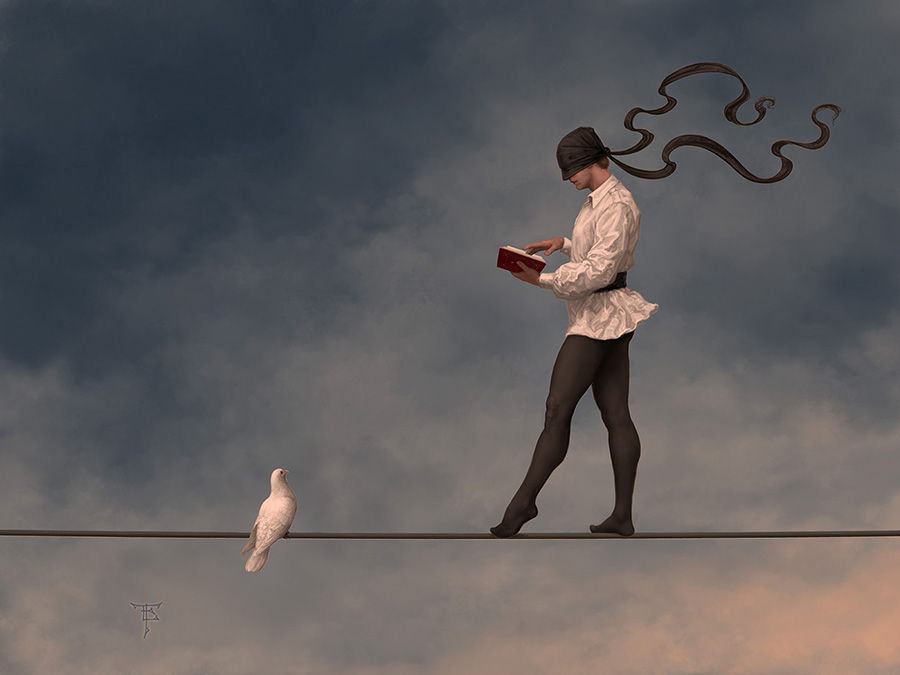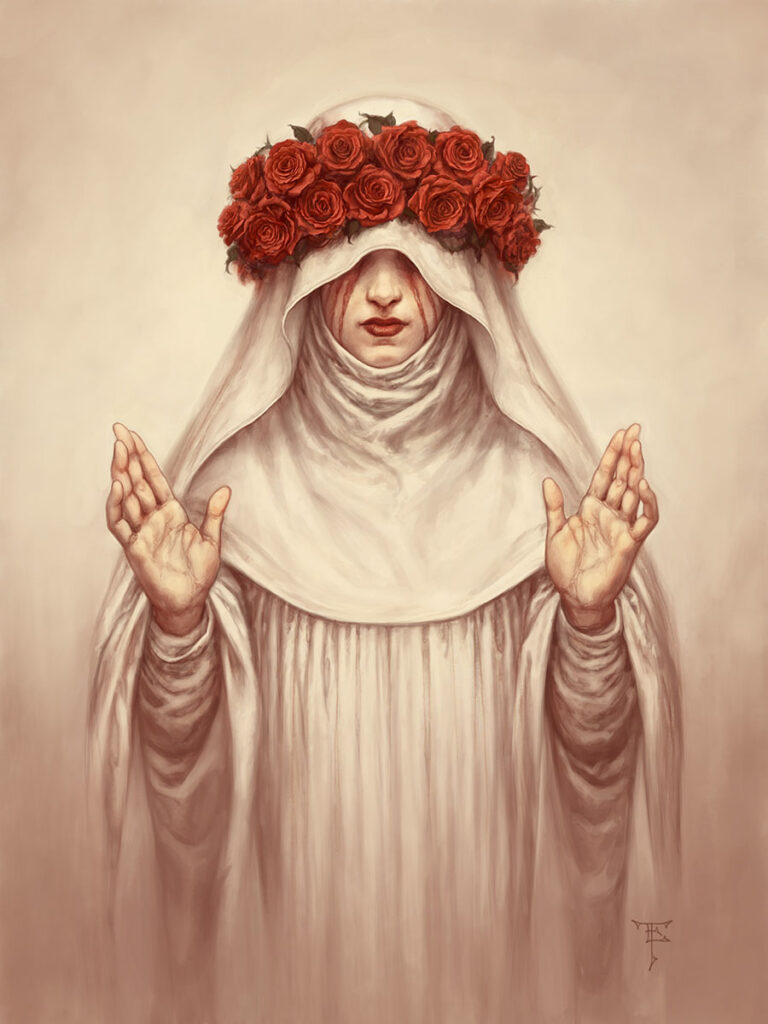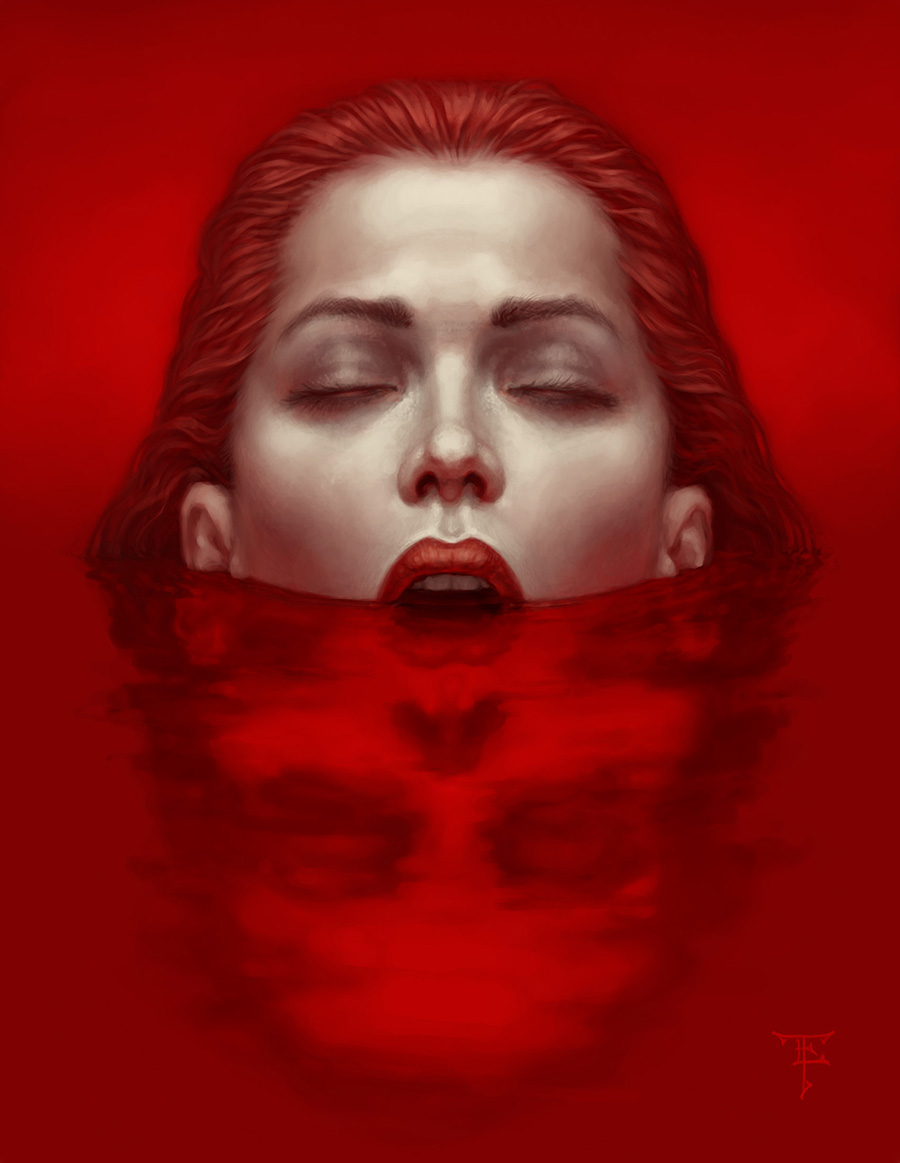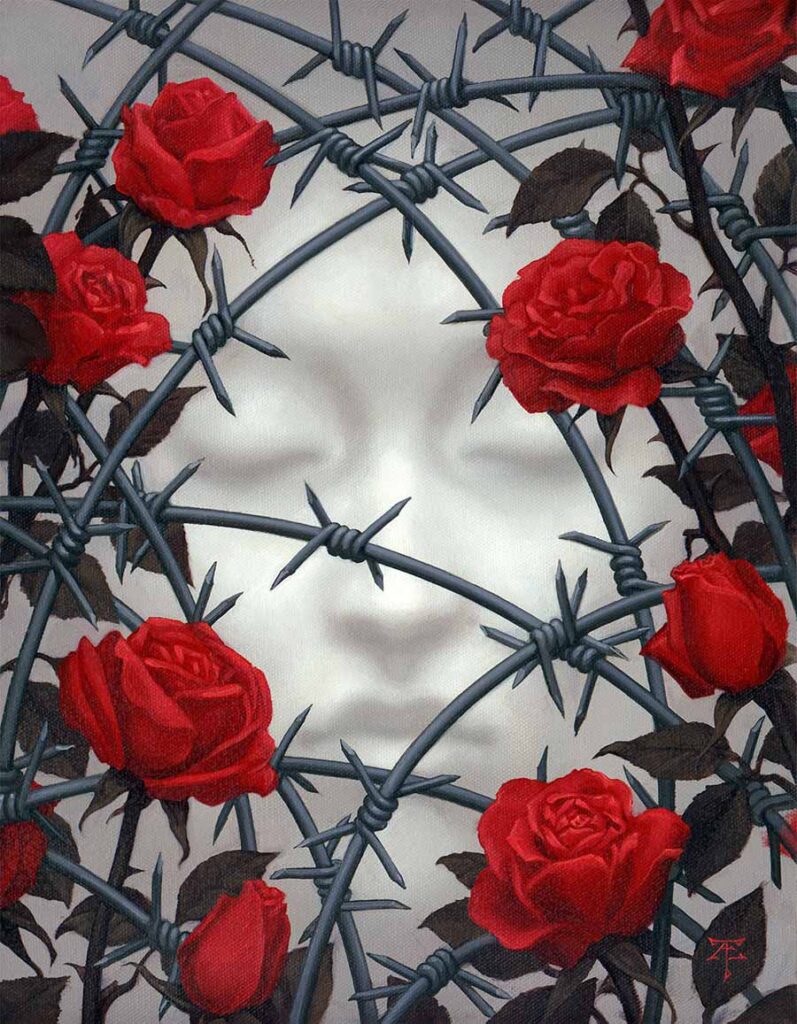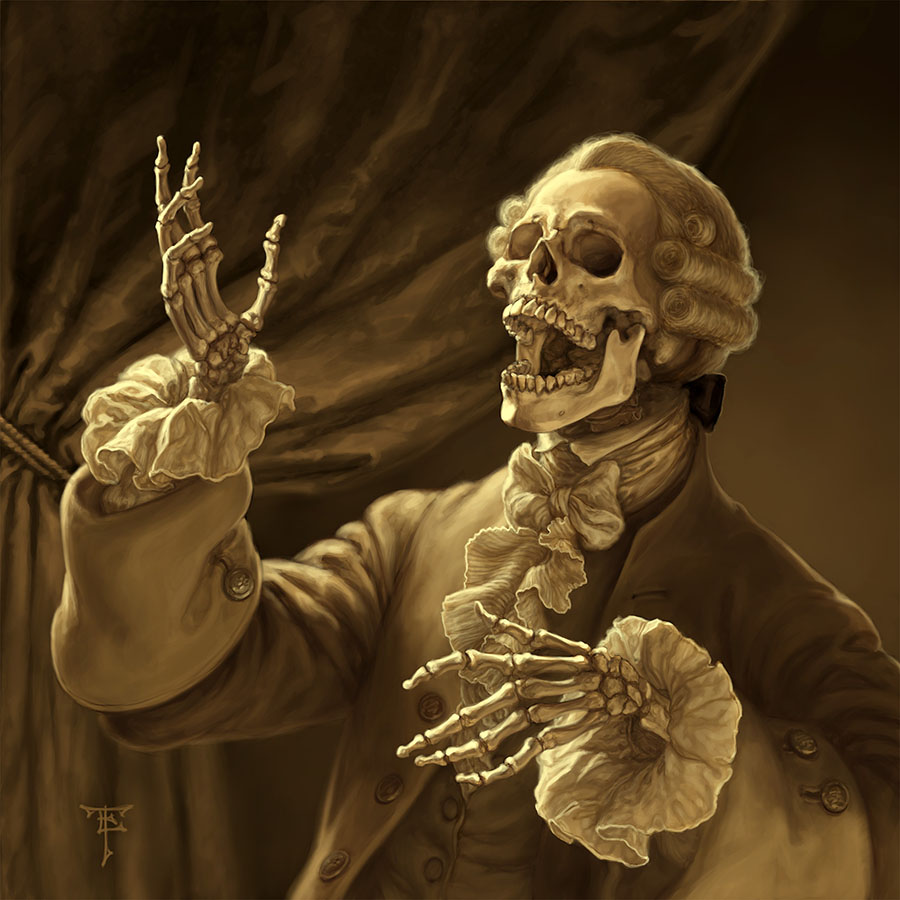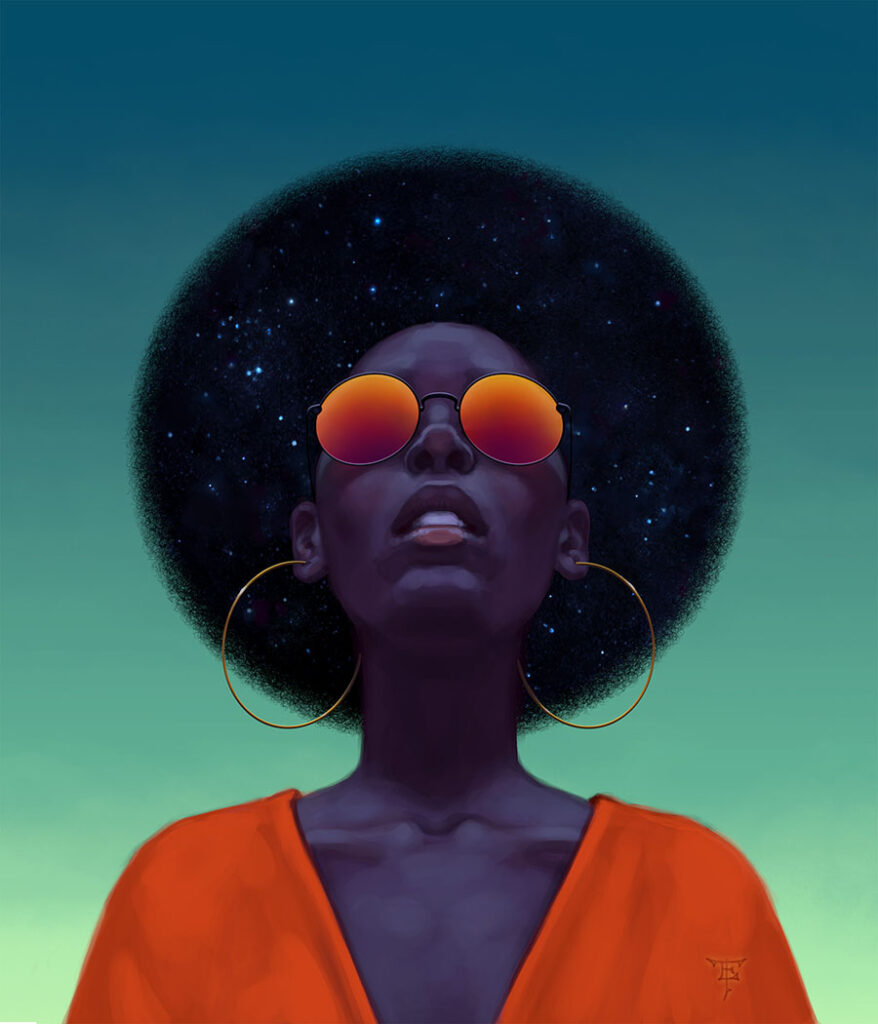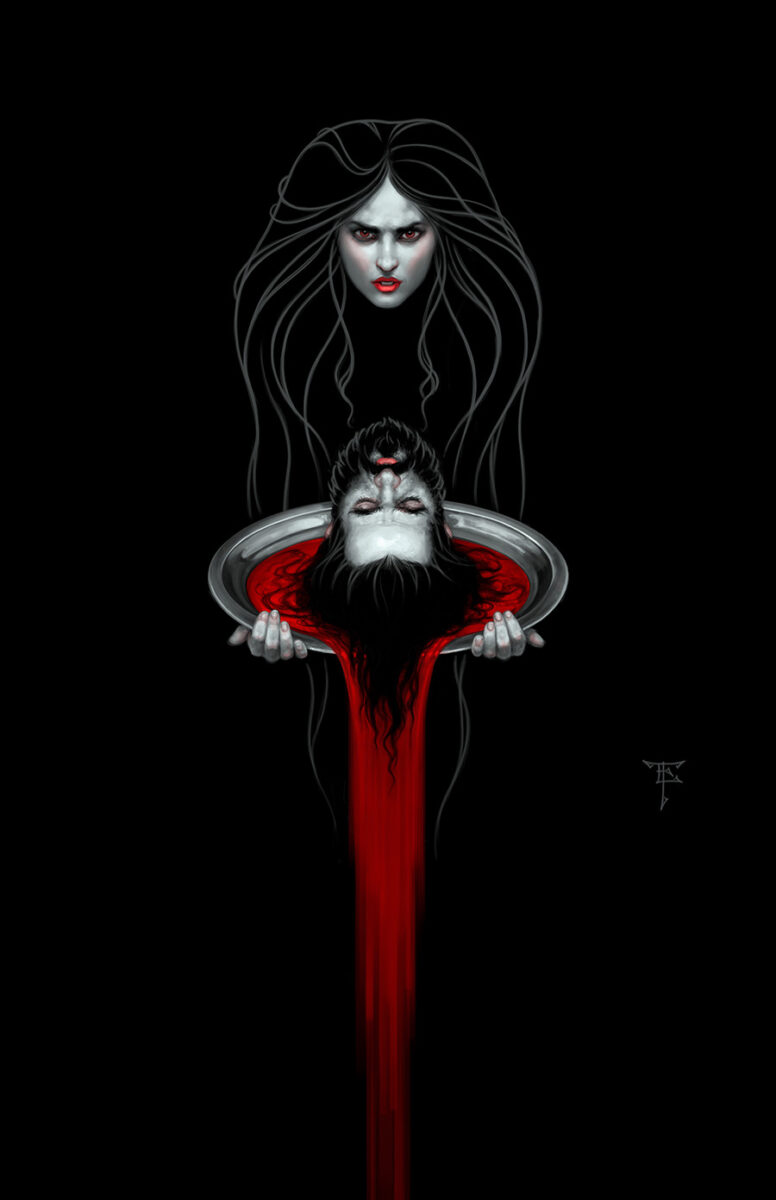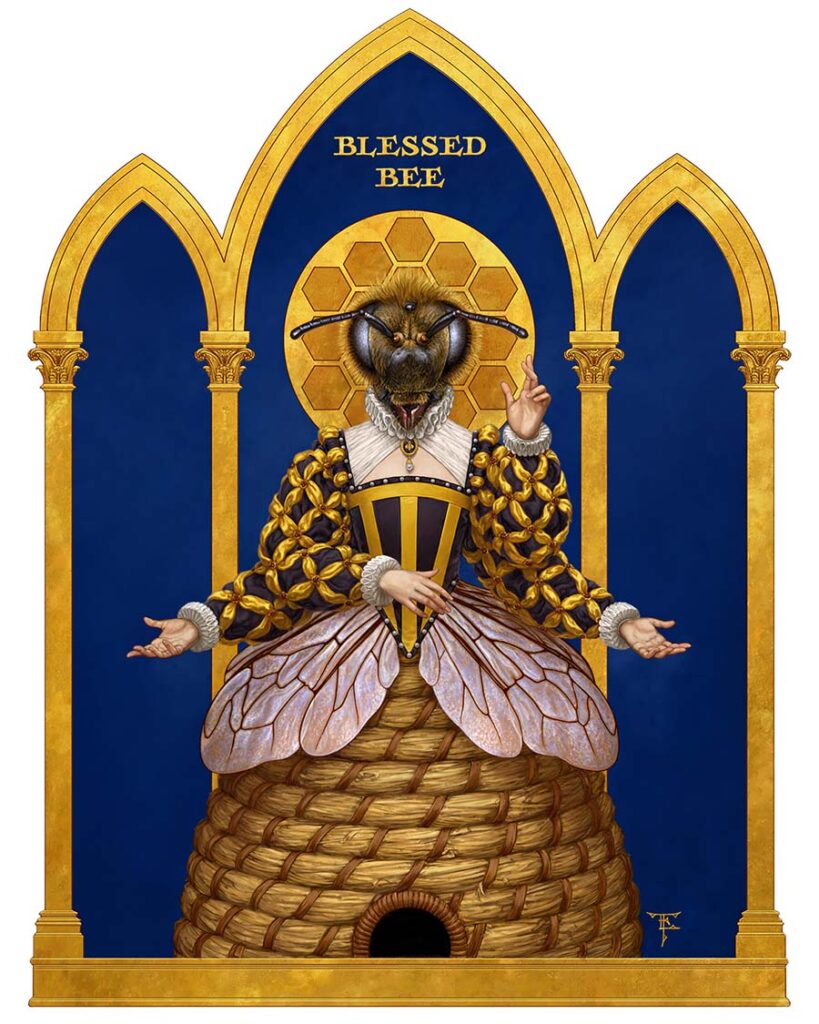Exclusive Interview with Tristan Elwell, 1st prize winner of the Digital Art Award, Beautiful Bizarre Art Prize 2024 written by Ren Riley
Tristan Elwell can hardly recall a time when it was not assumed in his household that he would grow up to be an artist. Unlike many young creatives who are discouraged from taking this often uphill path, Tristan’s parents, both creatives themselves, encouraged his talent from a young age. Today, he pays it forward by teaching illustration as well as taking clients while working on personal pieces between his other commitments.
His illustrations have graced the covers of many books, games, and magazines. Over time, his presence in those spaces, as well as galleries, has helped to refine the clientele who seek him out, giving him more opportunities to work on projects which take advantage of his individual style and strengths.
As an artist, Tristan’s ideas sometimes take decades to come to fruition. The dreamlike and surreal spaces he creates often gestate for years before he finally brings them to life—but once they’re born into the world, they are both striking and hard to forget. Even without novels to accompany them, Tristan’s works truly are worth thousands of words. What those words may be varies by the onlooker. But no one can walk away without the sparks of Tristan’s work lighting the fires of imagination. While he leaves the story up to the individual viewer, his works always hint at a deeper narrative.
Viewers could cultivate a multitude of stories from the pieces of his series portraying a variety of personalities and their animal counterparts isolated on high wires. His 1st place winning digital illustration, Inversion, is one dazzling example of how the artist can take a simple but innovative set of circumstances and use them to create a peculiar and thought-provoking sense of wonder.
In this exclusive interview, Tristan will sate our curiosity about his inspirations and processes—but will he alleviate our curiosity about who the bold denizens of his dream-like realms might really be? Read on to find out.
Your winning piece, Inversion, is part of a series depicting figures and animal counterparts in isolated settings–what drew you to this subject matter? What do their positions and the spaces they occupy represent?
The first piece in the series was a picture of a woman in a Victorian mourning dress seated on a high-wire surrounded by crows, which had been a repeated image in my sketchbooks for many years, and was finally completed during the pandemic and titled, appropriately, Isolation. I was drawn to the juxtaposition of birds, which naturally perch on a wires, with a human figure: who is she, and how did she get up there? This lead to exploring other combinations of characters and animals in similar settings. I also like that the elevated viewpoint completely cuts the characters off from any identifiable landscape or environment, with only the sky behind them.
Your work is inspired by two late 19th century art movements–the Symbolists and Decadents–which share a distaste for naturalism, preferring the symbolic and bizarre. In what ways do you feel kinship with the artists of those movements? What draws you to their work?
I love pictures and stories that have an uncanny dream-logic while still maintaining a level of believability, and, as someone whose training was as an illustrator, I appreciate pictures that have either direct literary references or an implied narrative. I also especially admire how the artists of those movements were able to apply traditional, even academic skills to work that challenged the dominant conservative mores of their era.
At the same time, we have to confront that these artists were of their time, and that many of their transgressive sexual and political views are highly problematic in a modern context. A book that was extremely influential for me when I was in art school was Idols of Perversity: Fantasies of Feminine Evil in Fin-de-Siècle Culture by Bram Dijkstra, which examines common tropes of late-19th century academic and avant-garde art both aesthetically and critically.
Can you take us through the process of creating a piece like Inversion from start to finish? How long does it take to go from concept to a fully fledged work of art?
My personal work tends to gestate for a very long time. I have pieces that have been in various stages of development for years, and some ideas go back to when I was very young. I periodically go back through my sketchbooks and scan pages that have the potential for further development so that they’re easily accessible. The timeframe is also extended because I’m fitting non-commissioned work in between illustration jobs. That said, actual work time can range from a few days to several weeks.
Much of your artistic practice is focused on commercial projects such as books, games, magazine editorials, etc. How do you balance projects inspired by specific briefs with your own artistic exploration?
Ideally, they feed each other. One of the things I enjoy about illustration is that I’m constantly being challenged to paint things and solve problems that I never would otherwise. On the other hand, the more of my personal work I show, the more the jobs I’m approached for are tailored to my interests and stylistic strengths.
While you’ve illustrated for all sorts of publications–from young adult fantasy books to mystery novels and even educational materials–do you feel drawn to any one genre over others? Do you have any favorite subject matter?
I’m drawn to dark aesthetics and subject matter, so I enjoy fantasy, mystery, and horror. But a lot of my work is also humorous, so I’m often called on for really silly or absurd pictures. When those things can come together, that’s fantastic!
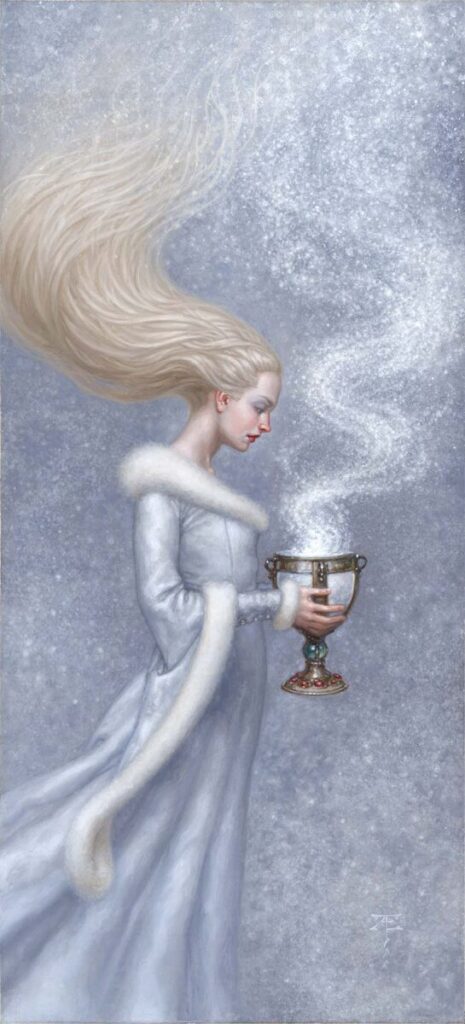
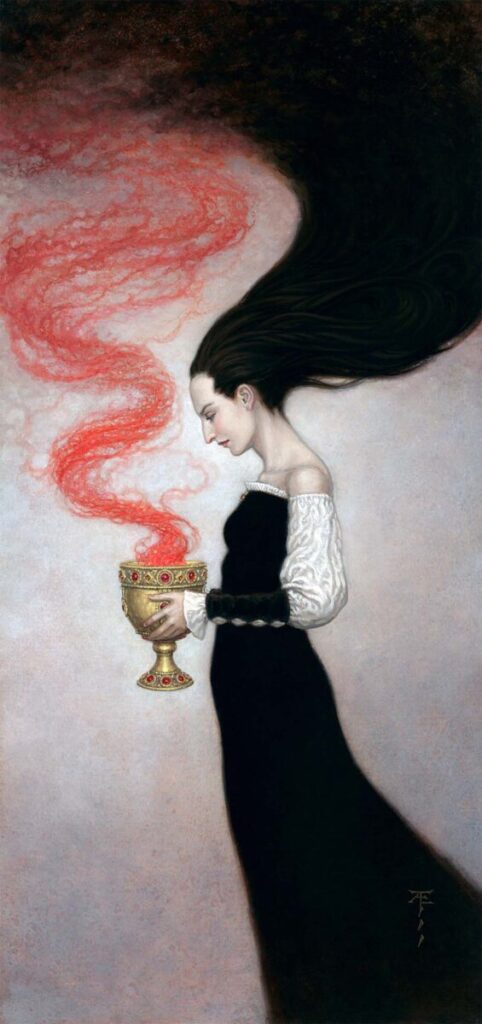
How did you first get started as an artist? When did you know you wanted to make visual art your career?
Both my parents came from artistic backgrounds and were very encouraging when I was young. There were always art books in the house, but also comic books and Mad magazine, and I started taking art classes at an early age. So I honestly don’t remember a time when it wasn’t almost assumed that I was going to be an artist.
In addition to your commercial work, you also teach drawing, painting, and illustration at The School of Visual Arts. What has your teaching career changed about your artistic practice? Have you learned anything from teaching that you may not have otherwise?
I love teaching! You learn so much more about process and technique when you have to articulate things so that they’re understandable to other people. And always being engaged with younger people helps keep you involved with the world and stops your brain from falling back on old habits and preconceptions.
What advice do you give to your students who are looking to start illustration careers?
It’s hard, because the industry is always changing. It’s totally different than it was when I was starting my career, or even five years ago, and will be different again in a few years. The main advice I give is that you’re better off learning what kind of art you want to make, and then finding, or if need be creating, a market for it, than you are chasing trends or trying to make work you think will be marketable. Your individuality is your most valuable asset.
Your individuality is your most valuable asset.
Why did you enter the Beautiful Bizarre Magazine Art Prize?
I appreciate that Beautiful Bizarre champions styles and subjects that are underrepresented in the larger art world, and I’ve always been impressed with the winners of the previous Art Prizes. Honestly, I never expected to win!
What do you feel you have gained from this experience?
The most valuable thing I’ve gotten is the validation of my personal work. It’s easy to put value on illustration work, because you get both immediate feedback from the client and also can take some credit if a project is successful. But so often with personal work artists are just sending things out into the social media ether, where, even if something gets a positive response, it’s also a fleeting one.
Would you recommend it and encourage others to enter? If so, why?
Definitely! It’s one of the best opportunities to have your work seen and exposed to fans and collectors of realist/fantastic art that exists.
